As summarised earlier, the Australian Bureau of Statistics (ABS) today released its labour force report for February, which registered a small 4,600 increase in total employment and a 0.1% fall in the headline unemployment rate (to 4.9%) because of a 0.2% rise in labour force participation.
In trend terms, the unemployment rate remained flat at 5.0%:

Again, total employment rose by a seasonally adjusted 4,600 to 12,763,400. Full-time jobs decreased by 7,300, whereas part-time employment increased by 11,900:

The participation rate fell by 0.16% to 65.57%, which is the reason why the unemployment rate fell:

Total employment continues to trend higher, although actual annual jobs growth is slowly falling:

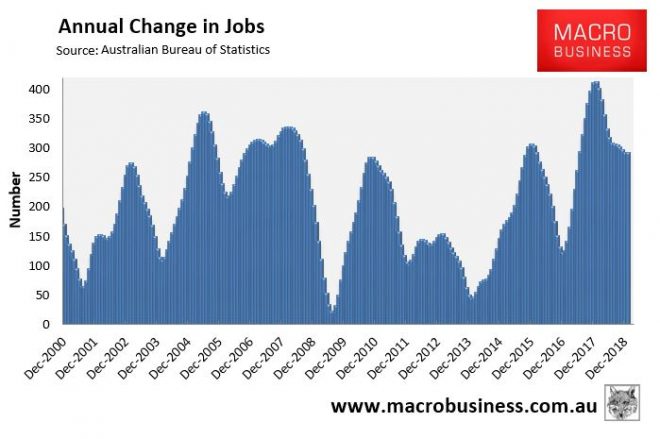
The trend annual growth rate is also flatlining at 2.3%, with full-time and part-time jobs growing at 2.6% and 1.8% respectively:
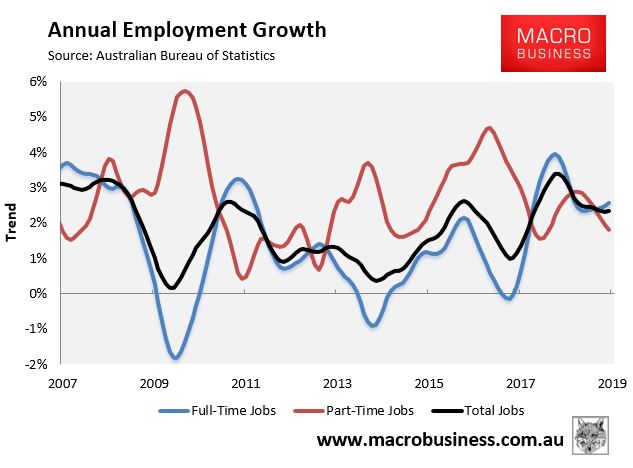
The proportion of the population in full-time work has rebounded a little:

In February, the major eastern states easily led jobs growth over the past year in seasonally-adjusted terms:

The state seasonally-adjusted figures are notoriously volatile and subject to a big margin of error. As such, the below chart tracks state jobs growth in trend terms. Here, NSW and VIC have once again driven the jobs growth:
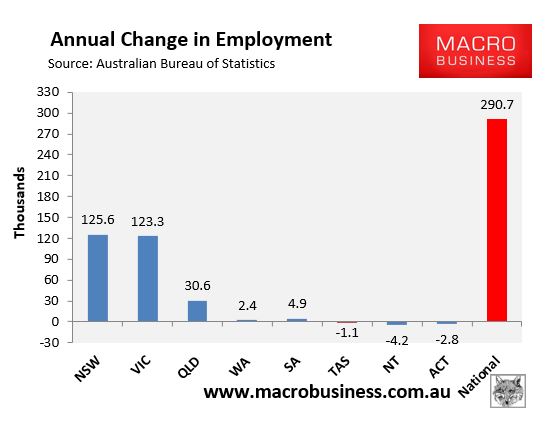
All mainland jurisdictions are experiencing annual jobs growth in trend terms, although growth is diverging:

WA and TAS now have the highest seasonally adjusted unemployment and NSW and VIC the lowest:

The below chart shows the ABS’ more reliable trend unemployment rates, which again shows NSW and VIC with the lowest unemployment and WA and TAS with the highest:

The aggregate number of hours worked has finally recovered from May’s heavy fall. They rose by 3.1 million hours (0.18%) in February, with total hours worked rising 2.2% over the past year:

The below chart, which tracks the annual change in hours worked on a trend basis, paints a mixed picture, with differing growth across jurisdictions and 1.9% growth recorded nationally and trending slowly upwards:

Average hours worked is also near all-time lows:
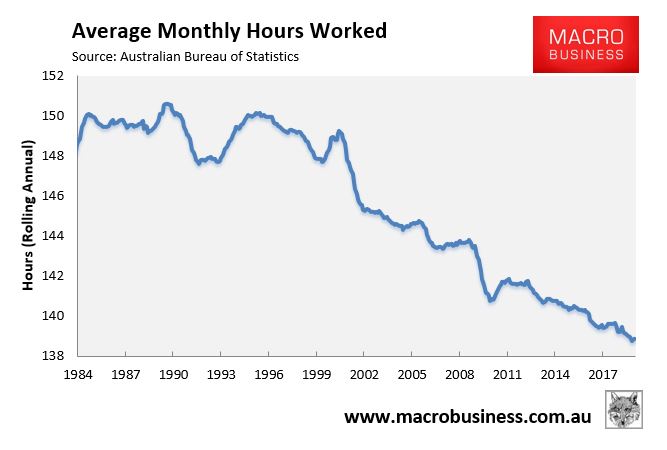
However, workforce participation is tracking near all-time highs in trend terms:
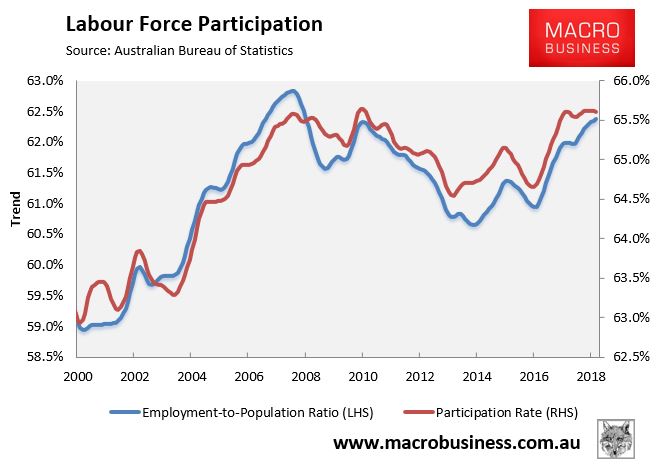
The next chart summarises the annual change in the key employment aggregates on a seasonally-adjusted basis, which shows a broadly recovered labour market:
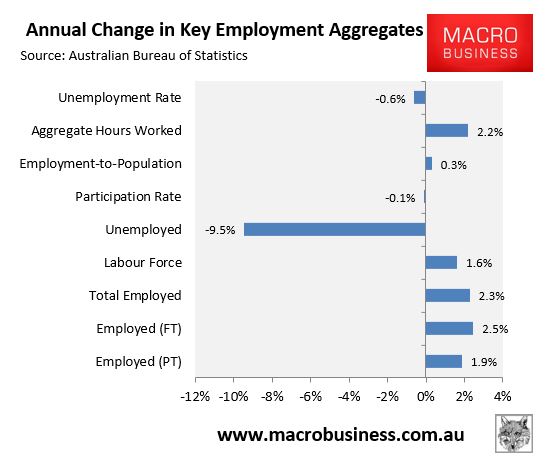
Finally, the ABS has switched to monthly reporting of underemployment and labour underutilisation. This shows a modest improvement in the underutilisation rate but little improvement in underemployment:
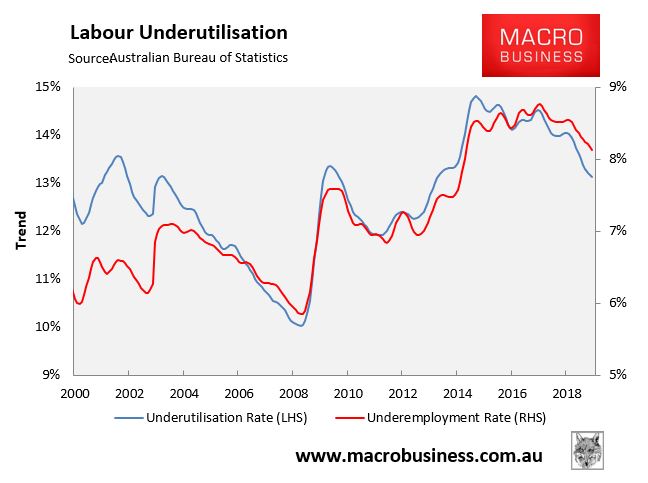
Given the strong correlation between underemployment and wages growth, this suggests that wages will remain in the gutter.
With most leading indicators are pointing to weaker jobs growth, consider this the calm before the storm.

